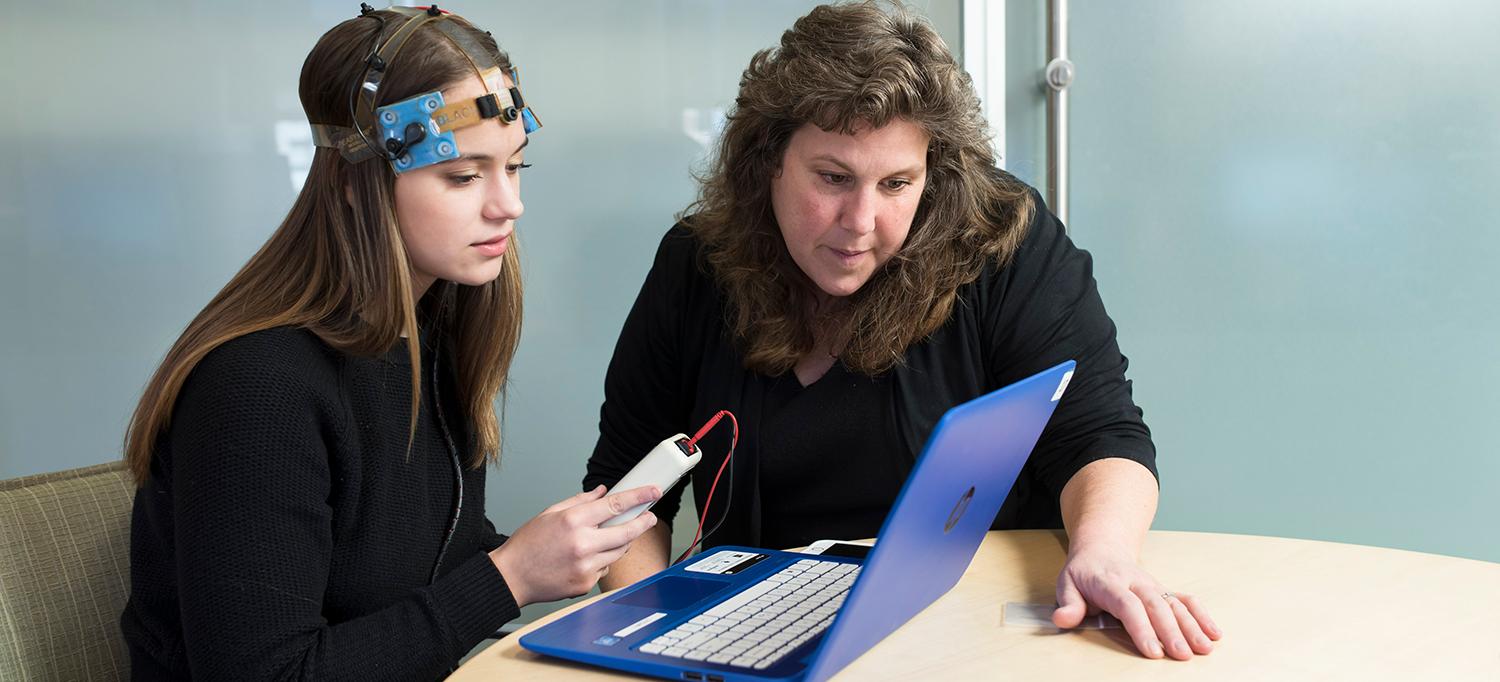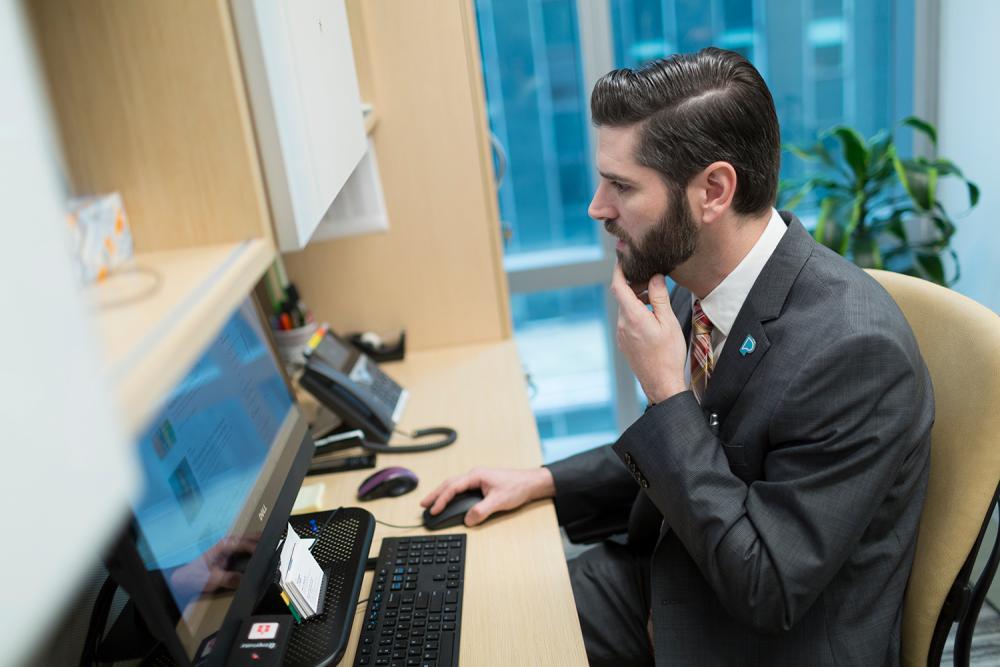
Dr. Leigh Charvet guides a patient through the process of remotely supervised transcranial direct current stimulation.
Photo: Karsten Moran
Novel treatment approaches developed and enhanced at NYU Langone hold potential for both reducing symptoms and strengthening rehabilitation protocols for patients with complex neurological disorders.
At-Home Transcranial Stimulation Provides Sustainable Relief for Multiple Sclerosis–Related Fatigue
Remotely supervised transcranial direct current stimulation (RS-tDCS), a novel NYU Langone–developed protocol designed to relieve a range of symptoms associated with multiple sclerosis (MS), is gaining momentum as clinicians at the Multiple Sclerosis Comprehensive Care Center uncover new applications for the telemedicine technology.
RS-tDCS safely influences the brain’s neuronal activity by applying low-level electric current through electrodes placed on the scalp, with treatments carried out at home under remote video supervision. Findings from a 2017 clinical trial indicated that RS-tDCS can alleviate intractable MS-related fatigue, a common and troubling symptom that has been without treatment options until now.
The remote capability is critical to the technique’s effectiveness, notes Leigh E. Charvet, PhD, associate professor of neurology, who leads the MS-related tDCS research. “For optimal long-term effect, tDCS treatments need to be administered five days a week for four weeks or more—and traveling to a clinic can be difficult for people with advanced MS or Parkinson’s disease,” she says. “We’ve spent a lot of time working with biomedical engineers to make our tDCS headsets easy to use so MS patients can operate them unassisted.”
Following these encouraging results, a 2018 study, published in Neuromodulation: Technology at the Neural Interface, revealed enhanced gains in complex attention and response variability among MS patients who received tDCS during cognitive training exercises.
“Because tDCS influences the resting potential of the brain’s neurons to fire and form connections, reinforcing neuroplasticity, the hope is that it can reinforce the learning process,” explains Dr. Charvet. “When paired with rehabilitation, this should produce quicker, stronger, and more lasting results.”
Together, these promising results have bolstered a number of additional studies. Researchers are now conducting a large-scale controlled trial of RS-tDCS’s benefits for MS-related fatigue, and they have launched another study, funded by the Department of Defense, which is investigating the effects of applying tDCS to the motor cortex of patients with progressive MS while they perform hand exercises designed to improve manual dexterity.
Researchers are also conducting a National Istitutes of Health–funded pilot study using real-time functional MRI scans during patients’ tDCS treatments to gain insight into the brain changes elicited by the treatment protocol. Collectively, these trials will provide insight into who benefits from tDCS and which parameters work best when administering it.
The Impact of Remotely Supervised tDCS on Parkinson’s Disease and Other Neurological Conditions
NYU Langone researchers are also looking into the benefits of RS-tDCS for other neurological conditions in several open-label studies.
A study conducted in collaboration with researchers at the Marlene and Paolo Fresco Institute for Parkinson’s and Movement Disorders, slated for publication in the Journal of NeuroEngineering and Rehabilitation, demonstrated the applicability of this methodology in Parkinson’s disease, with improvements in fatigue and cognition similar to those seen in MS. Further, as published in 2018 in the Journal of Clinical Neuroscience, patients with moderate Parkinson’s disease experienced a notable reduction in symptoms from using RS-tDCS in combination with cognitive training.
“The use of telemedicine to supervise at-home tDCS will allow us to reach more patients and also to bypass common obstacles that prevent populations with mobility impairment or other accessibility barriers from participating in clinical trials and receiving health services,” says Milton C. Biagioni, MD, assistant professor of neurology and coinvestigator on the study. “This is the first time an RS-tDCS protocol has been designed for and tested in these patients.”
These early positive findings sparked a separate clinical trial, funded by the Parkinson’s Foundation and concluding in late 2018, that studied the use of RS-tDCS to alleviate fatigue and cognitive slowing in Parkinson’s patients—with encouraging findings submitted for publication.
Case histories compiled from this study also detail RS-tDCS’s potential as a treatment for depression and cerebellar ataxia, as well as for stroke-related damage and head injury—demonstrating its far-reaching promise as a treatment modality for neurological disease.
Although studies currently focus on patients with moderate Parkinson’s disease, researchers at the Fresco Institute anticipate expanding these investigations in the near future to include patients with advanced disease.
“The specific effects of tDCS depend on its applications and frequency of use, and these tele-monitored trials play a critical role in defining those parameters so we can reach and help as many patients as possible,” Dr. Biagioni concludes.


